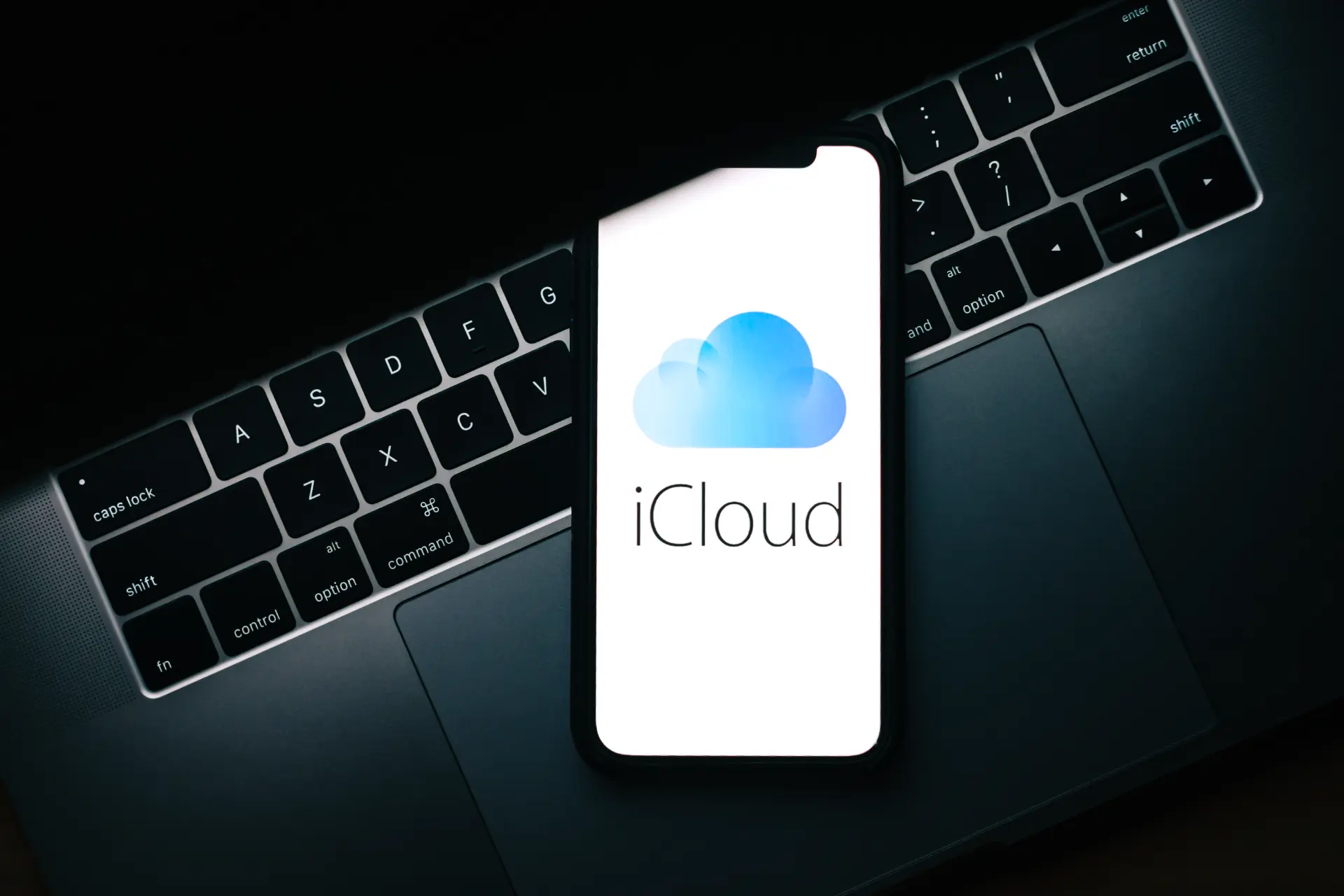Table of contents
- iCloud Security: how does it work?
- The benefits of end-to-end encryption
- The limitations of Advanced Data Protection
- Recap: how to enable Advanced Data Protection
- Is iCloud really secure with Advanced Data Protection?
Storing your data in the cloud has become a daily habit, but how safe is your information really when stored online?
Apple, always focused on privacy, has introduced the Advanced Data Protection feature to strengthen iCloud security. But does this solution truly guarantee complete protection?
In this article, we’ll explore how end-to-end encryption works, and the advantages and limitations of this new security measure.
iCloud security: how does it work?
Apple’s cloud, known as iCloud, allows users to sync and store files, photos, contacts, and other personal data on remote servers. However, for seamless access, much of this data is encrypted in transit and at rest, but not with end-to-end encryption.
This means that, if requested by authorities or following a hacker attack on Apple’s servers, some data could be accessible.
To address this vulnerability, Apple introduced Advanced Data Protection, a feature that extends end-to-end encryption to nearly all iCloud data.
What is Advanced Data Protection?
Advanced Data Protection is an option that iCloud users can manually enable to extend end-to-end encryption (E2EE) to many more categories of data.
With this feature enabled, only the account owner has the keys needed to decrypt the stored information, eliminating the possibility that Apple—or any other entity—can access the data, not even in the event of legal requests or server breaches.
How end-to-end encryption works on iCloud
End-to-end encryption is a method of data protection where information is encrypted on the user’s device before being sent to Apple’s servers.
The data remains encrypted until the user retrieves it using a private key, which is never shared with Apple.
To compare, imagine sending a letter locked with a padlock: only someone with the correct key can open the lock and read the contents.
In the case of Advanced Data Protection, the padlock is the encryption algorithm, and the key is stored only on the user’s devices—not on Apple’s servers.
What data is protected with Advanced Data Protection?
When this feature is enabled, various types of data on iCloud are protected with end-to-end encryption, including:
Photos and videos saved to iCloud Photos
Example
If a hacker gained access to Apple’s servers, your videos and photos would be completely unreadable unless they possessed your decryption key.
Notes and reminders
Example
If you store sensitive notes in Apple Notes, like temporary passwords or private info, no one can read them without access to your device.
Conversations saved to iMessage in iCloud
Example
A phishing attack or network interception couldn’t reveal your chat content because the messages would always be encrypted.
Passwords and iCloud keychain
Example
If you use iCloud Keychain to store passwords, no one but you can access your saved credentials.
iCloud backups
Example
With this protection enabled, your device backup contains only encrypted data, so not even Apple can recover it without your private key.
Even if Apple’s servers were compromised or hackers hit their data centers, user data would remain completely unreadable.
How to verify encryption with OpenSSL
If you want to better understand how encryption works, you can experiment with OpenSSL, an open-source library used to implement end-to-end encryption.
Here’s an example of how to encrypt a file (e.g., a private note) using AES-256, the encryption algorithm Apple uses to protect your data:
1. Create a sample file
Open the terminal and create a text file:
echo "This is a secret note saved on iCloud." > private_note.txt2. Encrypt the file with OpenSSL
Now use AES-256 to protect the file with a password:
openssl enc -aes-256-cbc -salt -in private_note.txt -out private_note.enc -pass pass:YourSecurePasswordExplanation of parameters:
- -aes-256-cbc: specifies the encryption algorithm
- -salt: adds extra protection against brute-force attacks
- -in: the input file
- -out: the encrypted output file
- -pass pass:YourSecurePassword: sets the password to decrypt the file
3. Verify the encrypted file
The resulting file (private_note.enc) will be unreadable without the correct key:
cat private_note.enc
Output will be similar to:
Ùf‡ó÷þŒÜóö´äüÙçȉÿ×·¸É@ÓÌÓÿÓÁÅÄŒÙëëê4. Decrypt the file
To restore the original file, use:
openssl enc -d -aes-256-cbc -in private_note.enc -out decrypted_note.txt -pass pass:YourSecurePasswordNow you can read the decrypted content:
cat decrypted_note.txt
Output:
his is a secret note saved on iCloud.Why is Advanced Data Protection important?
The implementation of end-to-end encryption on iCloud through Advanced Data Protection offers several benefits:
- Protection against hacker attacks
Even if a hacker breaches Apple’s servers, the data would be useless without the user’s key. - More privacy compared to competing providers
Services like Google Drive and Dropbox do not offer end-to-end encryption for all data, making them potentially vulnerable. - No access by Apple or authorities
With this feature activated, even Apple can’t access your data—not even in response to law enforcement requests. - Full backup security
Unlike before, iCloud backups are now fully encrypted, preventing unauthorized access.
The benefits of end-to-end encryption
The introduction of Advanced Data Protection brings several advantages in terms of cyber security. The main benefit is that since the data is encrypted end-to-end, not even Apple can access it. This prevents accidental or forced disclosure of information, improving user privacy.
Additionally, this system renders the data useless to any hackers who manage to breach Apple’s servers—without the decryption key, they cannot read anything.

The limitations of Advanced Data Protection
Despite the numerous benefits, Advanced Data Protection comes with some important limitations.
Not enabled by default
One major drawback is that Advanced Data Protection is not turned on by default. The user must manually enable it in iCloud settings. This may be a problem for those unaware of its existence or unfamiliar with Apple settings.
Practical example
A user who hasn’t enabled Advanced Data Protection might believe all their iCloud data is already fully encrypted. If Apple’s servers are breached or a government request is issued, some of their data may be retrievable—unlike users who have enabled the feature.
How to enable Advanced Data Protection manually
To activate Advanced Data Protection, follow these steps:
- Open Settings on an Apple device.
- Tap your name at the top and select iCloud.
- Go to Advanced Data Protection.
- Follow the instructions to enable it and set up a recovery method (either a recovery key or a recovery contact).
Tip: Store the recovery key in a safe place or set a trusted recovery contact.
User responsibility: risk of data loss
Since only the account owner has the decryption keys, Apple cannot help recover data if the user loses access.
If you forget your password or lose your main device without a recovery method, all end-to-end encrypted data will be lost forever.
Practical example
Imagine a user enables Advanced Data Protection but then loses their iPhone without setting a recovery key. If they don’t remember their Apple ID password, they will never regain access to their iCloud backups, photos, notes, and saved passwords.
Solution: Before enabling Advanced Data Protection, it’s essential to set up a recovery key or recovery contact.
How to generate a recovery key (CLI with OpenSSL)
If you want to manage your keys more securely, you can create a custom encrypted recovery key using OpenSSL and store it safely.
Example of generating a random recovery key using AES-256:
openssl rand -base64 32 > recovery_key.txt
Now you can view and save your recovery key:
acat recovery_key.txt
Sample output:
t7v8f9eG4hHk3PzX2cKq1N8D7wL5BmUyTip: Write your recovery key on paper or store it in a secure password manager
Some data is not included in end-to-end encryption
Despite Advanced Data Protection securing most iCloud data with end-to-end encryption, some categories are excluded to ensure compatibility with other synchronization services.
Data not protected with end-to-end encryption:
- iCloud Mail
- Contacts
- iCloud Calendar
The main reason is that these data types need to remain compatible with third-party providers (e.g., external mail servers and cross-device sync).
Practical example
If a user stores confidential emails in iCloud Mail, these emails are not protected with end-to-end encryption. If their account is compromised or if Apple receives a legal request, the data could be handed over to authorities.
Solution: If you want to protect your emails with end-to-end encryption, use a service like ProtonMail or Tutanota, which offer advanced encryption for communications.
Encrypting an email before sending (PGP with GPG CLI)
To encrypt an email before sending it, you can use PGP (Pretty Good Privacy) with GPG.
Generate a PGP key pair (if you don’t have one):
gpg --full-generate-key
Export the public key to share it with the recipient of your encrypted message:
bash
CopiaModifica
gpg --export -a "YourName" > public_key.ascEncrypt a message before emailing it:
"This is a secret message" | gpg --encrypt --armor --recipient "Recipient"
The recipient can decrypt the message with:
gpg --decrypt encrypted_message.ascTip: Use PGP if you need to send end-to-end encrypted emails, since iCloud Mail doesn’t offer this protection.
Recap: how to enable Advanced Data Protection
Activating this feature is quite simple. Just follow these steps:
- Open Settings on an Apple device.
- Select your name at the top and go to iCloud.
- Tap Advanced Data Protection and enable it.
- Follow the instructions to set up a recovery contact or recovery key to avoid permanently losing access to your data.
Once activated, the protection applies to all devices linked to the user’s Apple ID.
Is iCloud really secure with Advanced Data Protection?
With this feature enabled, iCloud becomes one of the most secure cloud storage solutions available—especially compared to competing services that don’t offer end-to-end encryption for all data.
However, absolute security does not exist: the user must still adopt cyber security best practices, such as using strong passwords and enabling two-factor authentication.
Ultimately, data protection always depends on how consciously the technology is used, even the most secure system can be compromised by human error, phishing, or unsecured devices.
Conclusion
Advanced Data Protection is a significant step forward in cyber security for Apple users, offering stronger protection against breaches and unauthorized access. However, security also depends on user decisions: enabling this feature is just one step toward complete protection of your data.
Questions and Answers
- What is Apple’s Advanced Data Protection?
It’s a feature that extends end-to-end encryption to data stored on iCloud for greater security. - Is Advanced Data Protection enabled by default?
No, users must enable it manually through iCloud settings. - Which data is protected with end-to-end encryption?
Photos, notes, backups, iMessage conversations, passwords, and other iCloud data. - Can I lose my data if I enable this feature?
Yes, if you lose your recovery key or recovery contact, you will no longer have access to encrypted data. - Does Advanced Data Protection protect iCloud emails?
No, emails, contacts, and calendars are not included in end-to-end encryption. - Can Apple access my data with this feature enabled?
No, only the owner of the Apple ID can decrypt the data. - Is Advanced Data Protection available on all Apple devices?
Yes, but devices must be updated to the latest version of iOS, iPadOS, or macOS. - What happens if I forget my recovery key?
Without a recovery key or recovery contact, encrypted data will be permanently lost. - Is iCloud more secure than other cloud storage services?
With Advanced Data Protection enabled, iCloud offers better protection than many alternatives. - Is it worth enabling Advanced Data Protection?
Yes, if you want greater security for your data—but you must be certain not to lose your recovery key.

